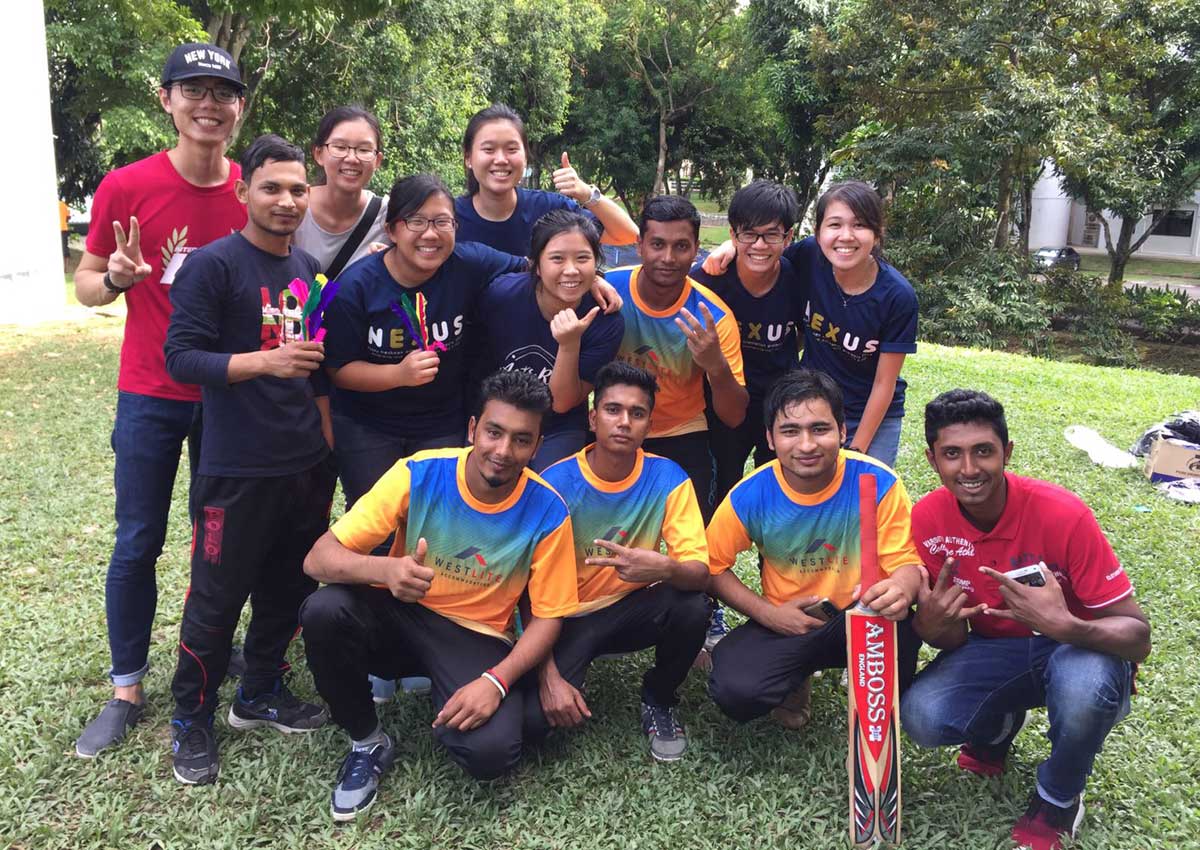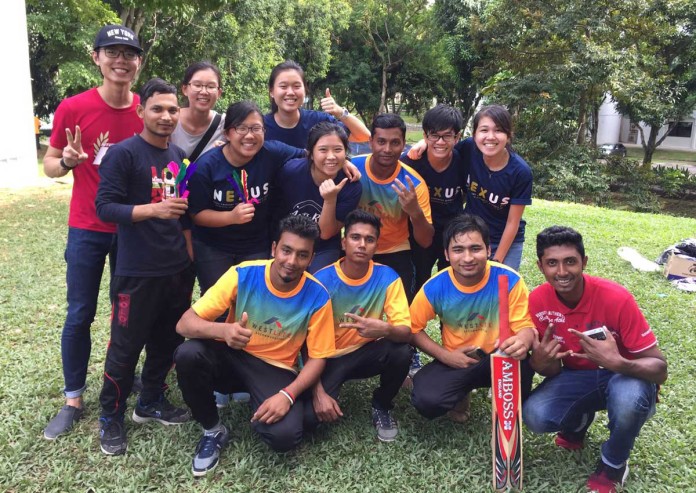Sports have long brought people together, and in some dormitories, young Singapore students and migrant workers have come together to play football, sepak takraw and badminton.
For the past few years, five Secondary 4 students from Hwa Chong Institution have been organising sports sessions every two to four weeks in Mandai.
“We hope to promote bonding, and allow Singaporeans to have a look at the living conditions of foreign workers,” says the team’s logistics head Dexter Tan.
In another initiative, students from the Migrants Committee of the College of Alice and Peter Tan at the National University of Singapore (NUS), as well as NUS medical and nursing students, volunteered at an inter-dormitory cricket competition for workers and helped them measure their blood pressure.
Student Bernice Lee notes that many one-off events are based on assumptions of what migrant workers need.
“We need to have conversations with them to have a deeper understanding of their lives and circumstances… before we can implement a more long-term and meaningful initiative,” she says.
Many individuals and groups are stepping up to offer support to low-income migrant workers.
Mr Abdul Khaeer Mohammed Mohsin started local Bengali newspaper Banglar Kantha in 2006 to update the community on topics such as sports, Bangladesh politics and local Manpower Ministry rules.
Working out of his second-floor office in a Little India shophouse, he says problems for migrant workers have increased in the past decade, after the economic downturn saw some lose their jobs or get exploited by firms trying to cut corners.
“There aren’t many recreation materials for them, so many want to read the newspaper,” he says.
He publishes 6,000 copies a month. He also uses the shophouse to run the Dibashram cultural space, where workers rest, do literary work and seek counselling.
In 2011, some workers formed a literary society under the paper’s name. Many of the 50 or so members contribute poems and articles.
Separately, lawyer Dipa Swaminathan and volunteers collect unsold food items from 18 Starbucks outlets each Saturday, to distribute to workers.
She gives out donated raincoats, phonecards and other necessities on other occasions.
On a larger scale, some non-profit groups run training courses for low-income migrant workers.
Aidha, for instance, holds financial literacy sessions for maids.
One new kid on the block is Project Chulia Street, which hopes to be a “middleman” linking up companies and individuals with avenues to meet workers’ needs.
It recently started a pilot scheme with Fullerton Hotel, where excess frozen food is delivered to dorms for workers to use.
Says co-founder Eva Lim, who is marketing director at fish farm company Kuhlbarra: “We realised a lot of companies want to give, but they want a systematic, organised way to do so.”
The group organised two events for thousands of workers at Westlite dormitories for Labour Day and National Day.
It is holding a third fiesta today for 7,000 workers.
It aims to run classes in managing finances at dormitories and improve dental care for workers.
Founding director David Goh says the migrant worker community is a part of Singapore people overlook: “We are all common inhabitants of Singapore, so we should do what we can to strengthen our social fabric.”

This article was first published on December 18, 2016.
Get a copy of The Straits Times or go to straitstimes.com for more stories.







